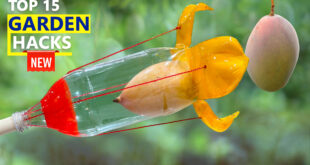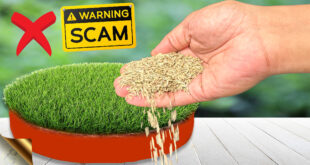No season is harsher on plants than winter, with cold temperatures and a really tough time for plants to survive and grow. Hello Friends! In Today’s post we will look into 10 Lifesaver tips and tricks for gardening in winter season.
Most summer plants either begin to die or prepare for a type of hibernation or dormancy during winter season. For beginners, hibernation or dormancy means a period of inactivity where all the processes like growth are slowed down something like a suspended animation. So during this period, You must help your plants and care for them if you want to keep them alive. Whether outdoor plants or Indoor plants all need winter care for survival. But outdoor plants are more prone to winter attacks than indoor plants. But It all depends on how vulnerable the plants are, how cold the weather is and the length of the winter season and also your location or the zone you live in.
The secret to
helping plants survive winter is adjusting some care routines to suit seasonal
growing conditions. Let’s review these 10 gardening
tips on winter plant care one by one.
10. Plant Selection: Always Choose the plants that are suited to your climate and zone. This is the simplest and lowest-effort choice. Learn which growing zone you live in and keep the plants that will survive in your zone.
9. Conserve Plants Energy in Winter: Remove any dead leaves, buds, flowers and even branches to conserve your plant’s energy during the state of dormancy. And as a general rule for most plants fertilizers are not used during winter. Even if used, the quantity should be very minimal. The only exemption to this rule are the winter flowers and winter vegetables and few other plants. For other plants you can resume fertilizers at the start of spring season.
8. Bring potted plants indoors: If you have any potted plants or hanging baskets outdoors, bring them inside your home. This will increase the temperature by at least 5 degrees. For sun loving plants, place them back in sun during day time. I know it’s a tough task, but you need to take the pain for the sake of your plants.
- 7. Covering your plants: This is a very important step if you do not want to bring your plants indoors. You can use various things to cover your plants depending on the size of your plants and pots, Like:
Use Polythene covers or Zip lock bags to cover smaller plants. Being transparent, you can even leave them covered even during day time. Make sure you make some small holes in the bag for air circulation. And also leave some space of about 1 or 2 inches at the bottom side.
Then you can also use any size plastic shopping bag and make similar holes for air circulation. Use just anything to protect your plants, even a blanket or any piece of cloth to cover the plants by placing few sticks or supports for tenting. For support, You can also use a garden trellis or make your own DIY trellis using some long sticks. Take it off during the daytime for sunlight exposure. This method works best to protect plants from frost.
Another Hack here is, use empty pots to
protect seedlings or small plants. Just place them upside down and cover the
seedlings or young plants in night time and ofcourse remove the cover in the
morning to expose them to sunlight.
- Mulching: For beginners Mulching is a process of applying some material to the top layer of your garden soil.
Apply a layer of mulch like shredded leaves, twigs, straw and things like that that act as insulators, holding in heat and moisture in the soil. It is used to protect the root systems of your plants from cold temperatures and also prevents weed growth.
- You can build your own DIY polyhouses or greenhouses using some polythene sheets and sticks and keep your plants inside. Also there are many ready to use poly house bags and tents available online.
- Supply a heat source: In extremely cold condition, you can provide your plants with a heat source like a room heater or a high wattage light bulb or even plant grow lights like LED grow lights. These are not just for warmth but also to help them prepare their food – that is photosynthesis.
- Pruning: Prune or trim your plants, especially if your plants are under pest attack or diseased. Pruning can certainly save your plant. And as discussed earlier, this will also conserve the plants energy. You can check a detailed post on how to prune, when to prune and types of pruning.
- Spray the plants: specially indoor plants sprayed with a light mist at least once a day are usually benefited. Spray and clean the leaves of dust, and help them perform photosynthesis efficiently using the minimum amount of light available.
- Watering: For Indoor Plants considerably reduce the frequency of watering to prevent rot. And also Plants grow at a slower rate in winter and obviously require very less moisture. If you are not sure, use the Finger dip method: like dip your finger into the soil to about an inch and check for moisture. Water it only if it’s completely dry.
 GKVKs – Gardening Tips and Store Gardening Tips and Store
GKVKs – Gardening Tips and Store Gardening Tips and Store



